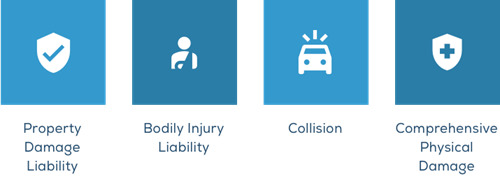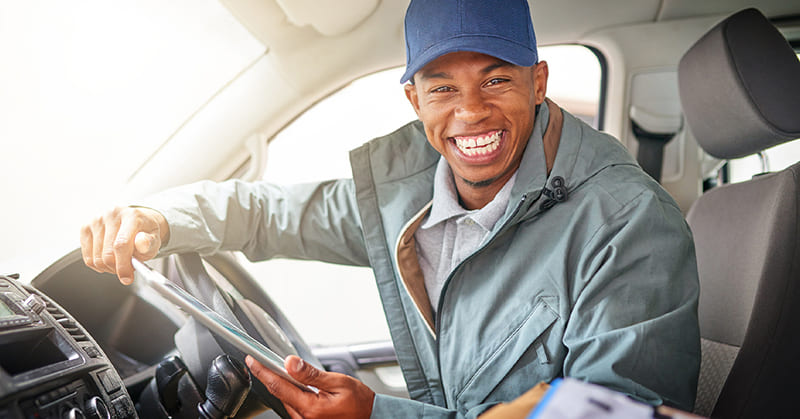Omaha, NE, Sept. 11, 2023 (GLOBE NEWSWIRE) — If your business owns or leases vehicles, you need commercial auto insurance. It’s common for owners of small businesses to believe that their personal auto policy will cover their work cars or trucks. However, that may not be the case. To ensure your company is properly protected from liability or losses related to the use of vehicles for work purposes, you’ve got to have commercial auto coverage.
Business Auto Insurance Covers Many Types of Vehicles
Sometimes referred to as business auto insurance, commercial truck insurance, or commercial vehicle insurance, commercial auto insurance can protect a wide variety of vehicle types, including:
 Specifically, commercial vehicle insurance provides:
Specifically, commercial vehicle insurance provides:
- Cars
- Pickup trucks
- Buses
- Food trucks
- Limousines
- Truck tractors
- Delivery vans
- Tow trucks
- Passenger vans
- Box trucks
- Cargo vans
- Flatbed trucks
- Dump trucks
- Dry van trailers
- Refrigerated trucks
 Specifically, commercial vehicle insurance provides:
Specifically, commercial vehicle insurance provides:
- Property damage liability coverage. If your vehicle is involved in an accident that damages someone’s vehicle or property, your policy can cover the cost up to your policy limits, including legal defense expenses depending on the type of policy purchased.
- Bodily injury liability coverage. If you or your employee is driving a company vehicle and are at fault in an accident that injures or kills someone, your policy can cover related costs up to the policy limit. This typically includes legal defense expenses.
- Collision coverage. This aspect of commercial vehicle insurance pays for damage to vehicles or trailers on your policy from a collision with another vehicle or a single-car accident.
- Comprehensive physical damage coverage. This pays for damage to vehicles or trailers on your policy from something other than a car accident—like theft, vandalism, flood, fire, and other specified hazards.
- Medical payments, no-fault, or personal injury coverage. This coverage is typically optional, but some states require a minimum amount of coverage. It’s for the medical expenses of an employee or a passenger traveling in your vehicle, regardless of who is at fault in an accident.
- Uninsured motorist coverage. If your vehicle is involved in an accident caused by a hit-and-run driver or someone who doesn’t have insurance, this coverage can pay for medical expenses and, in some instances, property damage. Underinsured motorist coverage (when the at-fault driver has insurance but not enough to cover the damage caused) may be included depending on the type of commercial auto policy you purchase.
- Architects and engineers
- Bakeries
- Bus companies
- Business management consultants
- Cleaning and janitorial companies
- Contractors
- Corporate trainers
- Electricians
- Food service companies
- Food trucks
- Home inspectors
- IT consultants
- Landlords
- Landscaping companies
- Non-emergency medical transport companies
- Personal trainers
- Photographers and videographers
- Retailers
- Restaurants
- Taxi companies
- Transportation companies
- Trucking companies for hire
- Wholesalers
- Racing. Costs associated with vehicle racing aren’t covered.
- Intended or expected property damage or injuries. If an authorized driver uses your vehicle to cause intentional damage or bodily injury, your policy won’t cover related costs. The same is true if they should have expected that their actions would cause damage or bodily harm.
- Worker injuries covered by workers’ comp insurance. Injuries that should be covered by a workers’ compensation policy, aren’t covered by commercial auto insurance—even if the business doesn’t have a workers’ comp policy.
- Mobile equipment operation. Commercial auto insurance doesn’t cover liability associated with mobile equipment like cranes or forklifts.
- Hired and non-owned vehicles. Commercial auto only covers vehicles you “schedule” or add to the policy. So, it doesn’t cover vehicles you rent, hire, or borrow since they’re not listed on your policy. However, you can add coverage for these types of vehicles to a general liability policy or business owners policy (BOP). (See below for details.) Also, temporary rental vehicles are covered if your listed vehicle is being repaired, serviced, or suffered a total loss.
- Bodily injury liability coverage. Your employee is driving a company cargo van to get supplies when they run a stop sign and collide with another vehicle. That driver suffers injuries, the court finds your employee to be at fault, and it requires your business to pay more than $30,000 in medical bills, court fees, and other costs.
- Property damage liability. Your crew member is backing a pickup into a homeowner’s driveway and hits the garage door. The customer sues you and is awarded $6,500 for repairs.
- Comprehensive physical damage coverage. Vandals damage several company vehicles on your lot, breaking windows, painting graffiti, etc. The cost of repairs is over $25,000.
- Check applicant driving records. Potential employees with a history of traffic offenses and accidents pose a greater liability risk to your business. Obtain a report from your state’s Department of Motor Vehicles and review it carefully. The applicant will likely have to sign a release form to give you access to the report. You should also check the driving record of existing employees who are changing roles and will have driving responsibilities.
- Document your safety rules. People have different driving experiences and habits. But you can “get everyone on the same page” by defining and explaining your expectations for employees who drive company vehicles. It’s also helpful to offer incentives for safe driving and be clear about disciplinary actions for those who violate your rules.
- Train employees on safe driving practices. Training helps employees connect your safety rules to real-world driving behaviors. Both online training and live instruction can be helpful.
- Prohibit calling or texting while driving. The use of devices while driving is dangerous. You should have a strict rule prohibiting texting or making calls while driving. You should also instruct employees in your office or at a job site not to attempt to contact coworkers when they’re on the road.
- Buy vehicles with good safety records. Some vehicles are designed in a way that makes them safer and less prone to accidents than others. That includes optional features that help drivers operate them safely. You should purchase vehicles with high safety ratings and get the optional safety features.

